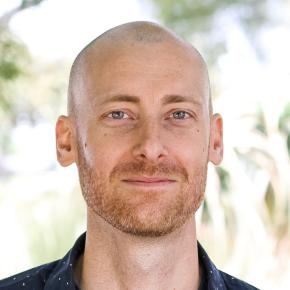The origin of life is a mystery that has plagued origin of life researchers trying to find a naturalistic explanation. Nobel Prize winning molecular biologist Francis Crick, who co-discovered the structure of the DNA molecule, said, “The origin of life seems almost to be a miracle, so many are the conditions which would have had to have been satisfied to get it going.”
These are very telling words from an atheist. Of course, when Crick speaks of the beginning of life from non-life as almost a miracle, he is speaking of the incomprehensible improbability of getting the first life by chance.
What exactly are some of these conditions that had to be satisfied? Allow me to demonstrate. But to do this, you need to understand a little bit of biology.
All living things are made of cells. The simplest forms of life have only a single cell, while human beings have over one hundred trillion cells. Next, all cells are made of proteins. Proteins perform specific functions in each of our cells. Some act like tiny machines, while others act as structural components. Finally, each protein is made of a chain of amino acids. Amino acids are the building blocks of proteins. They join together into long chains that eventually fold into the functional protein.
Scientists believe the simplest form of life has a minimum of 250 to 400 proteins, and each protein is made of (on average) 300 to 400 amino acids. There are 20 different amino acids that make up all of life.
What I would like to do is calculate the probability of building one functional protein with only 150 amino acids by chance alone. But right out of the gate we encounter our first problem. It turns out that amino acids come in two forms: left-handed and right-handed. However, all of life is composed of left-handed amino acids. If one right-handed amino finds its way into your amino acid chain, then our protein is ruined. This is a well-known problem in biology called the chirality problem.
You might be thinking, what’s the probability of getting 150 left-handed amino acids in a row? Given that the odds of getting a left-handed amino acid are 50%, the probability of getting 150 left-handed amino acids is (½)150 or 1 chance in 1045. This is the same probability of flipping a coin 150 times in a row and getting heads every time.
There’s another problem. Imagine you get all 150 left-handed amino acids in one place. You still need to bond them together with peptide bonds. However, not all bonds are peptide bonds. In fact, molecular bonds are grouped into two categories: peptide and non-peptide. The odds of getting a peptide bond are also 50%. Therefore, the probability of getting 149 peptide bonds between adjacent left-handed amino acids is (½)149, or again 1 chance in 1045. This is the same probability of flipping a coin 149 times in a row and getting heads every time. We could call this the bonding problem.
But wait, there’s more. The final problem is even more daunting than either the chirality problem or the bonding problem. It’s called the sequence problem. Amino acids are like a 20-character chemical alphabet. Each amino acid must be in a specific order, or we don’t get an amino acid sequence that folds into a functional protein. So, the specific order of the individual amino acids matters. Information scientists refer to this as specified complexity, or specified information.
At each site you have 20 different amino acids to choose from. When you do the math, there are 10195 total possible ways one can construct a protein composed of 150 amino acids. The question is, how many of those arrangements are actually functional? Doug Axe at Cambridge University has determined that the probability of getting a functional protein from all of the total possible proteins is 1 in 1074.
Think of it this way. Using the letters G, O, and D, you can create 27 possible three-letter words. However, only four make an actual meaningful sequence (i.e. DOG, GOD, GOO, ODD). That means if you put these letters in a bag and drew three at random, the odds of picking an actual three-letter word out of all the possible three-letter words are approximately 1 in 7.
Taking these three problems together, we can calculate the probability of building our very modest functional protein to be 1 in 10164. Remember, this is only one protein, and life requires hundreds of proteins.
Here is an analogy to help you appreciate this incomprehensible improbability. Imagine I put all the elementary particles in the universe in a jar—that is, every proton, neutron, and electron goes into a universe-sized jar. Next, I mark them all blue except for one green particle. Finally, I blindfold you, put a gun to your head, and ask you to pick out the green particle, or I pull the trigger.
The odds of picking the green particle while blindfolded are 1 in 1080. Of course, the odds of picking any particle are the same. However, it is vastly more probable that you would pick a blue, life-prohibiting particle than the one, green, life-permitting particle.
To make this analogy even more accurate, you would have to pick that green particle, twice in a row, blindfolded. If you indeed picked the green particle twice in a row, the rational person should conclude that you cheated. You peeked. You designed the outcome for your survival. Design is the best explanation. In the same way, the best explanation of the origin of the first protein and of life is a Designer.
Is it any wonder that the famous atheist, Antony Flew, upon learning about this information came to believe in God? In a letter in the August-September issue of Britain’s Philosophy Now magazine, Flew wrote, “It has become inordinately difficult even to begin to think about constructing a naturalistic theory of the evolution of that first reproducing organism.”

